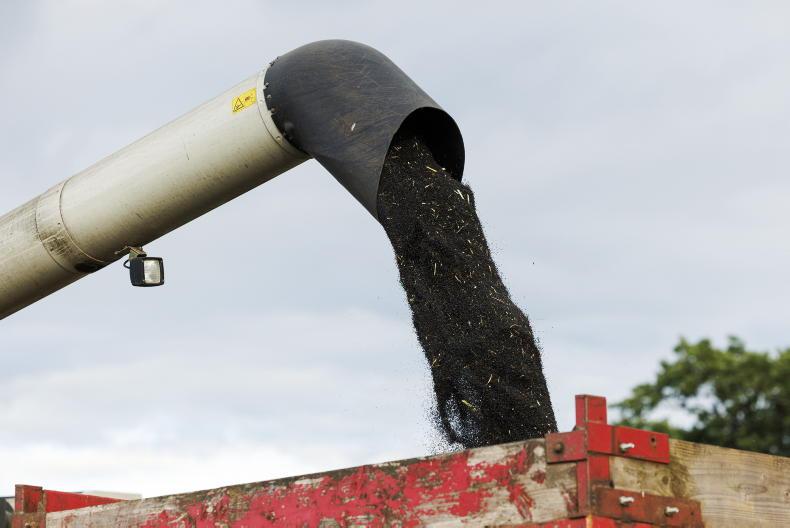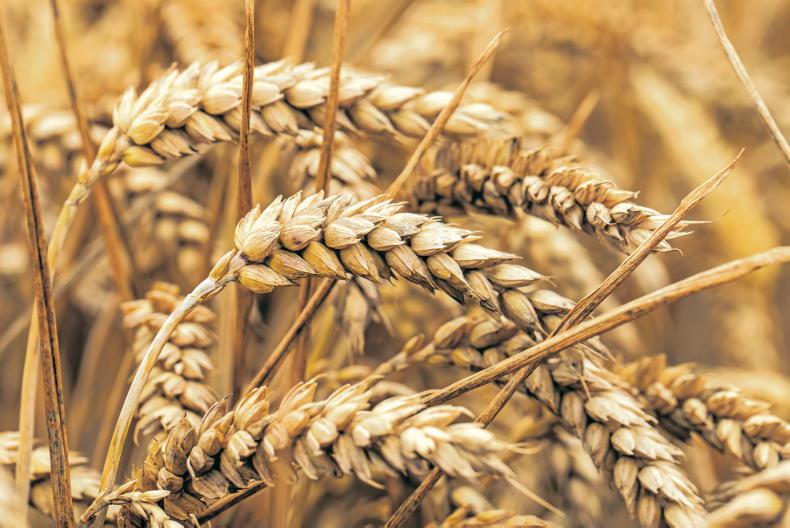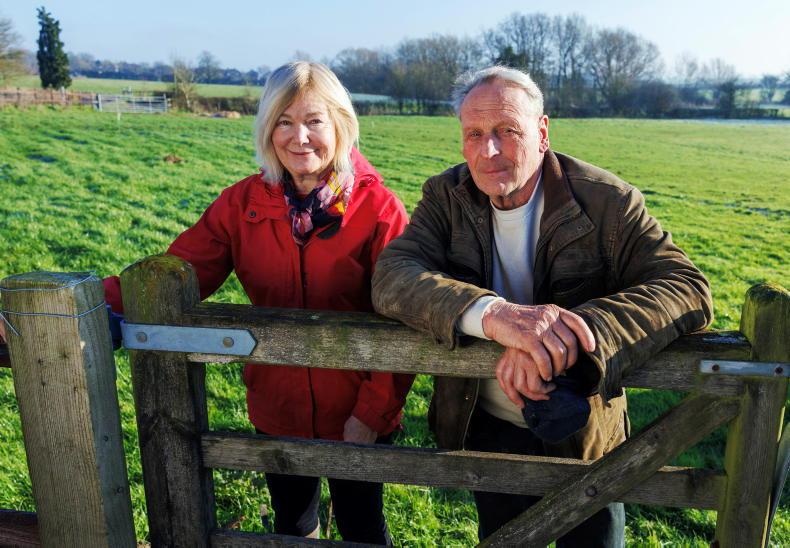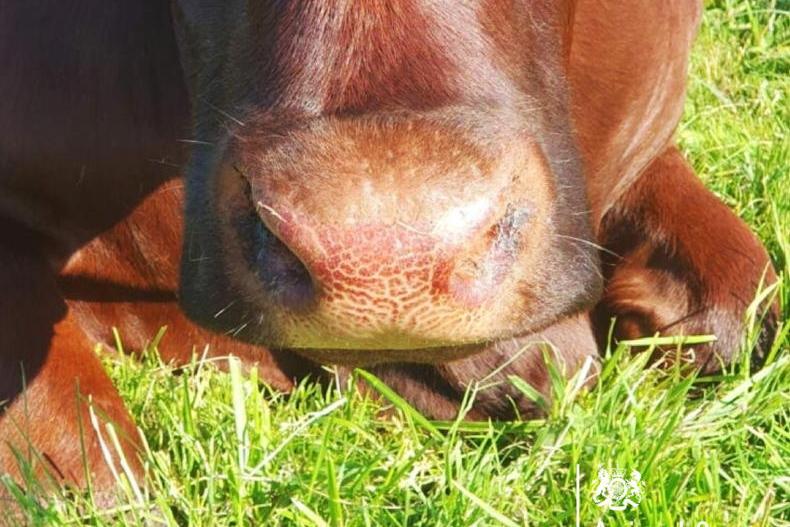This time last year I wondered if I would ever see the combined trio of high yields, good weather and good prices come together in the same year again. The first time I had really witnessed this happen in my lifetime was in 2021 and it was indeed a unique year. The question then was – could it happen again?
One year later and we have the answer – a positive “yes”. As well as many other things, 2022 brought good growing and harvesting weather, good yields and price levels that belong in fairytales.
These comments were reflected in the Outlook figures presented recently by Teagasc, which indicated an average income on mainly tillage farms of €68,000, with 90% of farmers earning a positive margin.
This was unquestionably a highlight of 2022. Most small farmers showed modest incomes before support payments.
Many have said to me that this was their best year ever in farming. And for those involved, the various scheme payments arrived in accounts in recent weeks to add to the good feeling.
Wonderful weather for most
“Weather on tap” was how some people described the 2022 growing season. It was so easy to get work done with weather windows available for all the main work peaks of sowing through to harvest. And there was always more weather tomorrow to finish the job. That alone was a huge contribution towards relieving the mental pressure on growers.
The tillage sector is not used to getting things that easy, so it was very welcome. The challenge of having to harvest to help prevent excessive moisture and weight losses is a rarity we are not used to.
Harvest is normally a fight to get crops cut at a reasonable moisture level before the next rain comes. It was an easy year for man and machine.
While most of the country basked in summer sunshine for much of the year, some were less fortunate. Growers in the northwest had a much less satisfactory growing season which began with a wet spring that returned during summer. They did not get the good weather to drive an early harvest and neither did they have a great harvest yield wise.
Elsewhere, the sunny dry season was punctuated by occasional rain to keep crops ticking over nicely. An occasional field suffered from drought but not too badly. The combined sunshine, heat and rain provided a perfect growing season which was converted into yield in most crops and fields.
The single main exception to this was winter barley performance across parts of the south and southeast. While we can only speculate on the reasons for this, virus and take-all were contributory factors. Both are associated with early sowing for a given geography and this was a contributor in 2022.
But apart from virus and root diseases, foliar disease pressure was generally low in most crops. This left some scope for savings but where this was not possible the higher yields left a higher return on those investments.
However, it must also be said that winter barley did extremely well in many other parts of the country, as did most other crops. There were many superb yields in spring barley, winter wheat, winter oats, winter oilseed rape, maize and beet.
These benefited from the good growing season but they were also helped by the good weather conditions in 2021 which left soil in good physical condition. Even the very wet February across the northern half of the country did little or no real harm.
Prices in paradise
Extraordinary is perhaps the only single word one can use to describe prices in 2022.
Prices had been drifting upwards from the tight supply situation in 2021 but then Russia invaded Ukraine and grain prices exploded.
Prices hit unimaginable levels. Spot wheat prices exceeded €420/t in mid-April and the MATIF December futures climbed above €440/t in late May.
Prices had eased back somewhat by harvest but green grain base prices that sat at just under €300/t before bonuses more than carried the additional production costs.
The story was even more dramatic with oilseed rape where November 2022 MATIF futures got above €850/t and even hit €1,000/t in some instances in May.
At that point, the November 2023 MATIF got up to €800/t but this has now fallen back to €565/t.
Unfortunately, the current price outlook for most crops for 2023 is not looking so rosy.
The recent Teagasc Outlook conference sees a price reduction which, when coupled with increased costs and normal yields, is suggesting a 48% decrease in average tillage farm income in 2023.
Higher costs are a real threat
The main negative in 2022 was unquestionably the hike in input costs, especially fertiliser.
The net impact depended on whether individuals had purchased product ahead of the big price hike, or not.
Price increases of 150% to over 200% added massively to production cost, which could have added an extra €60/t to high input cereal crops. The big concern now is that fertiliser prices could well stay strong, while the price of grain tumbles. We have seen this happen previously.
Energy costs took a big hike also, with diesel, gas and electricity all seeing substantial price increases. Gas prices impacted on fertiliser and electricity, but they have eased considerably from peak and diesel prices have also fallen considerably ahead of next season.
While inflation seems set to reduce, the falling grain prices would significantly erode the margins of 2022
Unfortunately, it was the war in Ukraine that drove prices, a war in a country where the ordinary people made an impression on those who travelled on an ITLUS tour there in 2008. Their helpfulness and generosity far exceeded their means and it was the people rather than the visits that we remember most.
All these factors have triggered considerable inflation which will continue to be felt as farmers access other services to conclude their financial year.
While inflation seems set to reduce, the falling grain prices would significantly erode the margins of 2022.
On top of this, we will have to suffer the cuts associated with the new CAP and its convergence, CRISS and capping deductions.
Inflation will continue to increase costs other than fertiliser. There are also changes associated with other regulations, such as nitrates and the conditionality requirement of the new CAP.
While 2022 was a good year for crop margins and ease of management, it is now giving way to a year that seems set to be far more challenging with increasingly complex regulations, reduced direct support, lower price prospects and what seems like an inevitable income drop in 2023.
2022 is a year to remember, a rare year where the elusive combination of good weather, good yields and good prices merged to produce great returns for the tillage sector. Prospects for 2023 currently feel much more muted as futures prices drop well below their peak. Inflationary cost increases add to the problems caused by extremely high fertiliser prices.
This time last year I wondered if I would ever see the combined trio of high yields, good weather and good prices come together in the same year again. The first time I had really witnessed this happen in my lifetime was in 2021 and it was indeed a unique year. The question then was – could it happen again?
One year later and we have the answer – a positive “yes”. As well as many other things, 2022 brought good growing and harvesting weather, good yields and price levels that belong in fairytales.
These comments were reflected in the Outlook figures presented recently by Teagasc, which indicated an average income on mainly tillage farms of €68,000, with 90% of farmers earning a positive margin.
This was unquestionably a highlight of 2022. Most small farmers showed modest incomes before support payments.
Many have said to me that this was their best year ever in farming. And for those involved, the various scheme payments arrived in accounts in recent weeks to add to the good feeling.
Wonderful weather for most
“Weather on tap” was how some people described the 2022 growing season. It was so easy to get work done with weather windows available for all the main work peaks of sowing through to harvest. And there was always more weather tomorrow to finish the job. That alone was a huge contribution towards relieving the mental pressure on growers.
The tillage sector is not used to getting things that easy, so it was very welcome. The challenge of having to harvest to help prevent excessive moisture and weight losses is a rarity we are not used to.
Harvest is normally a fight to get crops cut at a reasonable moisture level before the next rain comes. It was an easy year for man and machine.
While most of the country basked in summer sunshine for much of the year, some were less fortunate. Growers in the northwest had a much less satisfactory growing season which began with a wet spring that returned during summer. They did not get the good weather to drive an early harvest and neither did they have a great harvest yield wise.
Elsewhere, the sunny dry season was punctuated by occasional rain to keep crops ticking over nicely. An occasional field suffered from drought but not too badly. The combined sunshine, heat and rain provided a perfect growing season which was converted into yield in most crops and fields.
The single main exception to this was winter barley performance across parts of the south and southeast. While we can only speculate on the reasons for this, virus and take-all were contributory factors. Both are associated with early sowing for a given geography and this was a contributor in 2022.
But apart from virus and root diseases, foliar disease pressure was generally low in most crops. This left some scope for savings but where this was not possible the higher yields left a higher return on those investments.
However, it must also be said that winter barley did extremely well in many other parts of the country, as did most other crops. There were many superb yields in spring barley, winter wheat, winter oats, winter oilseed rape, maize and beet.
These benefited from the good growing season but they were also helped by the good weather conditions in 2021 which left soil in good physical condition. Even the very wet February across the northern half of the country did little or no real harm.
Prices in paradise
Extraordinary is perhaps the only single word one can use to describe prices in 2022.
Prices had been drifting upwards from the tight supply situation in 2021 but then Russia invaded Ukraine and grain prices exploded.
Prices hit unimaginable levels. Spot wheat prices exceeded €420/t in mid-April and the MATIF December futures climbed above €440/t in late May.
Prices had eased back somewhat by harvest but green grain base prices that sat at just under €300/t before bonuses more than carried the additional production costs.
The story was even more dramatic with oilseed rape where November 2022 MATIF futures got above €850/t and even hit €1,000/t in some instances in May.
At that point, the November 2023 MATIF got up to €800/t but this has now fallen back to €565/t.
Unfortunately, the current price outlook for most crops for 2023 is not looking so rosy.
The recent Teagasc Outlook conference sees a price reduction which, when coupled with increased costs and normal yields, is suggesting a 48% decrease in average tillage farm income in 2023.
Higher costs are a real threat
The main negative in 2022 was unquestionably the hike in input costs, especially fertiliser.
The net impact depended on whether individuals had purchased product ahead of the big price hike, or not.
Price increases of 150% to over 200% added massively to production cost, which could have added an extra €60/t to high input cereal crops. The big concern now is that fertiliser prices could well stay strong, while the price of grain tumbles. We have seen this happen previously.
Energy costs took a big hike also, with diesel, gas and electricity all seeing substantial price increases. Gas prices impacted on fertiliser and electricity, but they have eased considerably from peak and diesel prices have also fallen considerably ahead of next season.
While inflation seems set to reduce, the falling grain prices would significantly erode the margins of 2022
Unfortunately, it was the war in Ukraine that drove prices, a war in a country where the ordinary people made an impression on those who travelled on an ITLUS tour there in 2008. Their helpfulness and generosity far exceeded their means and it was the people rather than the visits that we remember most.
All these factors have triggered considerable inflation which will continue to be felt as farmers access other services to conclude their financial year.
While inflation seems set to reduce, the falling grain prices would significantly erode the margins of 2022.
On top of this, we will have to suffer the cuts associated with the new CAP and its convergence, CRISS and capping deductions.
Inflation will continue to increase costs other than fertiliser. There are also changes associated with other regulations, such as nitrates and the conditionality requirement of the new CAP.
While 2022 was a good year for crop margins and ease of management, it is now giving way to a year that seems set to be far more challenging with increasingly complex regulations, reduced direct support, lower price prospects and what seems like an inevitable income drop in 2023.
2022 is a year to remember, a rare year where the elusive combination of good weather, good yields and good prices merged to produce great returns for the tillage sector. Prospects for 2023 currently feel much more muted as futures prices drop well below their peak. Inflationary cost increases add to the problems caused by extremely high fertiliser prices. 









SHARING OPTIONS